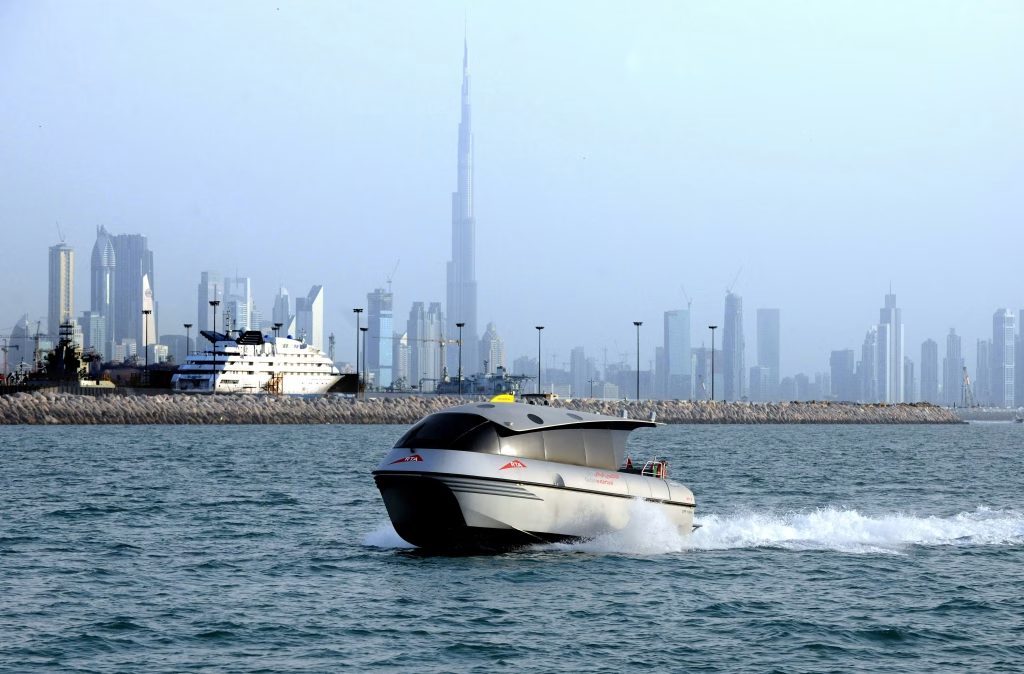Gliding across Dubai Creek by boat isn’t just a scenic shortcut—it’s a window into Dubai’s roots, offering travelers and residents a timeless ride between the city’s modern pulse and its historic heart.
Crossing Dubai Creek isn’t about transport, it’s about experiencing the city’s living history
We often think of Dubai as a city of skyscrapers, malls, and ultra-modern roads. But pause for a second—what if we told you that one of the most authentic ways to see Dubai isn’t by car or metro, but by water? Abra rides across Dubai Creek are not only one of the oldest commuting traditions in the city, they also remain among the most poetic. You’re not just crossing a body of water—you’re moving through time.
These boat taxis, known locally as abras, have connected the two historic districts of Bur Dubai and Deira long before the first high-rise tower was ever planned. Today, they continue to operate daily, offering a fast, affordable, and utterly charming way to get from one side of the creek to the other. And despite all the innovation surrounding them, they haven’t lost their traditional touch.
The www.few.ae team prepared this guide to help you make the most of your creek-crossing experience. We’ll walk you through the routes, share cultural insights, and give you local tips that you won’t find on tourist brochures.
What exactly is an abra and why does it still matter?
The word abra comes from the Arabic root abara, meaning “to cross.” In the context of Dubai, it refers to a small, motorized wooden boat that seats around 15 to 20 people. These aren’t replicas or tourist gimmicks—they’re real working boats used by residents and visitors alike.
Most of them run on diesel now, though the traditional engine-free versions still exist in certain areas for special charters. Unlike modern ferries or yachts, abras are refreshingly open. You feel the breeze, hear the splashing water, and if you’re lucky, catch the scent of spices drifting over from the souks.
Historically, abras were operated by hand using long oars. Today, they are steered by skilled navigators who’ve likely done the same route thousands of times. What’s remarkable is how unchanged the experience feels despite the years. It’s a testament to Dubai’s ability to preserve heritage while racing toward the future.
The main abra stations you need to know in 2025
As of this year, there are several officially operated stations under the Roads and Transport Authority (RTA) that manage creek crossings. The most popular are:
Bur Dubai Abra Station: Located near the Textile Souk, this is one of the busiest terminals. If you’re exploring Al Fahidi Historical District, this station will be your starting point.
Deira Old Souk Abra Station: This is the perfect entry point if you’re heading to the Spice Souk or Gold Souk. It’s directly across the water from Bur Dubai.
Al Sabkha Abra Station: Slightly north of Deira Old Souk, this terminal connects to a quieter section of Bur Dubai and is typically used by daily commuters.
Dubai Old Souk Station: Not to be confused with Deira Old Souk, this terminal is also located on the Bur Dubai side but closer to the Creekside markets and the Grand Mosque.
All these stations operate with short intervals—boats depart every 3 to 5 minutes during peak times, and every 10 minutes otherwise. You won’t wait long.
How long does the ride take, and when should you go?
An average abra ride across the creek takes just 5 to 7 minutes, but don’t let the brevity fool you. That short ride offers one of the richest views in Dubai. To your left and right, you’ll see minarets rising, modern buildings glittering, and traditional dhows docked beside 21st-century infrastructure.
Abras run daily, usually from 6:00 a.m. until midnight, although during Ramadan or national holidays, the hours may shift slightly. Morning crossings (before 9:00 a.m.) are serene, while evenings offer golden reflections of the old city in the water.
If you’re interested in photography, late afternoon is your best bet. The light hits the coral-stone buildings just right, and the bustle of traders loading and unloading goods adds beautiful energy to your shots.
No tickets, no apps—just hop on with dirhams in hand
Unlike other transport options in Dubai, abra rides are refreshingly low-tech. You don’t need to download an app or book ahead. Just show up, wait your turn in line, and pay directly to the operator.
The fare is fixed by the RTA and can be paid in cash. Some stations have begun trialing Nol card support, but this isn’t available at every boat. So always carry small denominations of cash—ideally coins or small bills.
You simply step aboard when it’s your turn, find a place on the wooden bench, and enjoy the ride. It’s that simple.
What’s the difference between public and private abras?
There are two main types of abras operating in Dubai: public abras and private charter abras.
Public abras run on fixed routes and are shared with others. These are what most people use for crossing the creek quickly and cheaply. Private abras, on the other hand, are available for hire by the hour or by the ride. These are ideal for families, couples, or photography enthusiasts who want to spend more time on the water.
Private abras can be found at most stations, but they’re usually moored a little further along the pier. If you’re unsure, ask the station attendant. Keep in mind that chartered abras must comply with RTA safety rules and are usually equipped with life jackets.
Prices vary depending on duration and route, but we won’t list numbers here since they change seasonally. Just know that for special occasions like proposals or family photoshoots, many residents opt for these private rides.

Etiquette and safety tips while riding an abra
We may be riding for leisure, but abras are still a public service—and there’s a quiet rhythm to using them. Here’s what locals follow:
First, wait your turn patiently. No one pushes or rushes. Seating is first come, first served.
Second, when boarding, step carefully and sit quickly. The boats are small, and movement affects balance.
Third, try not to block the view for others, especially if you’re taking photos. Most passengers want a glimpse of the city just like you.
Fourth, dress appropriately. Even though you’re on the water, you’re still in public. Swimwear and revealing clothes are discouraged—especially in Old Dubai where conservative dress is more common.
Lastly, listen to the boat captain. They’re in charge, and their word is final when it comes to safety and departure timing.
Abras versus other boat options in Dubai
While abras are the classic choice, Dubai also offers other types of water transport. There’s the RTA water taxi, which is air-conditioned and services longer distances along the coast. There are also Dubai Ferry routes that connect Business Bay, Dubai Marina, and the Palm Jumeirah.
But if you’re in Old Dubai, nothing compares to the abra for character, affordability, and immersion. In fact, many residents will tell you: if you haven’t taken an abra, you haven’t really seen the soul of the city.
A glimpse of Old Dubai from the water
As your abra glides through the creek, you’ll pass a stunning mix of architecture. On one side, Deira’s souks buzz with energy—hawkers call out prices, spices perfume the air, and gold glitters in shopfronts. On the other, Bur Dubai offers a slower pace: museums, traditional wind towers, and narrow alleys.
These aren’t contrasts—they’re complements. Together, they tell the story of a city built on trade, tolerance, and transition.
You might spot a dhow loading textiles bound for Africa. Or hear prayer calls echo from both banks. That’s Dubai Creek. And it’s more alive than ever.
Local tip: Combine your ride with a walking tour
One of the best ways to make the most of your abra ride is to combine it with a walking tour. Start in Al Fahidi Historical District, visit the Coffee Museum, then walk to the Textile Souk. Cross the creek on an abra, land in Deira, and explore the Spice and Gold Souks.
This loop not only covers Dubai’s most iconic heritage spots, but also immerses you in its daily rhythm. You’ll smell incense, touch silk, and hear at least five languages in the span of one hour.
And no matter the weather, the creek brings a breeze that feels like a gift in this desert city.
What’s changing in 2025?
As of this year, the RTA has begun trials for electric abras as part of Dubai’s wider sustainability goals. These vessels are quieter and emission-free, yet still honor the abra’s wooden design.
Additionally, a new covered station is being planned near Shindagha Museum to accommodate growing tourist traffic. This expansion is expected to link seamlessly with other forms of public transit like the metro and bus.
Don’t worry—the traditional charm isn’t going away. If anything, the upgrades are making the experience more accessible without diluting its authenticity.


 then "Add to Home Screen"
then "Add to Home Screen"